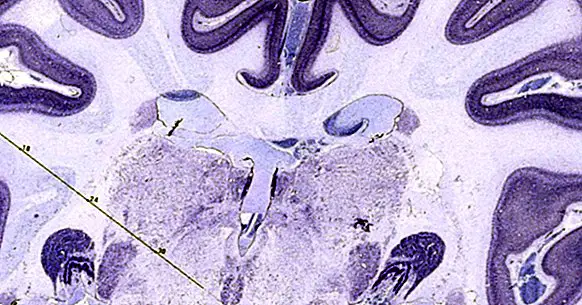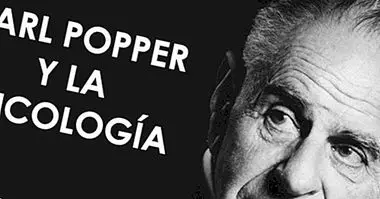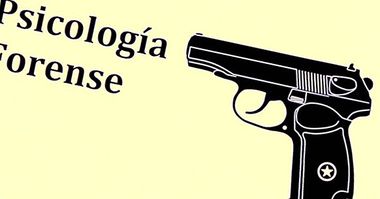The 3 types of sensory memory: iconic, echoic and haptic
There are many different hypotheses about the functioning of human memory that often overlap each other. In recent years, research has clarified key aspects of sensory memory, one of the oldest concepts in the field of scientific psychology applied to this basic process.
In this article we will define the characteristics of the three main types of sensory memory which have been described to date: iconic memory, echoic and haptic, which work with visual, sound and tactile stimuli, respectively.
- Related article: "Types of memory: how memory stores the human brain?"
What is sensory memory?
Sensory memory allows us retain information obtained through the senses during a short period ; later, these signals will be discarded or transmitted to other memory stores of longer duration, working memory and long-term memory, through which you can operate on immediate stimuli.
The concept "sensory memory" was coined by Ulric Gustav Neisser in 1967. His model was based on basic research and defined sensory memory as a registration decorates duration , of unlimited and precategorial capacity, that is, prior to the cognitive processing of information and consequently oblivious to conscious control.
Previously, in 1958, Donald Eric Broadbent had proposed the existence of a perceptual system through which all sensory stimuli would pass before reaching short-term memory and being filtered for the conscious processing of the most relevant items.
In its original formulation Neisser considered that there are two types of sensory memory : the iconic, which processes visual information, and echoic, based on auditory and verbal stimuli. Subsequently, solid evidence has been found in favor of the existence of haptic memory, related to touch and proprioception.
Types of sensory memory
Although it is considered that there are probably mnemic stores of short duration for all the senses, those that have been studied in greater depth are iconic memory, echoic and haptic .
1. Iconic memory
The most researched type of sensory memory is the iconic, which records visual information. The most relevant contributions to this phenomenon were made by George Sperling in the 50s and 60s, but later authors like Neisser, Sakkit and Breitmeyer have updated the conception of iconic memory.
Through his pioneering studies with a tachistoscope, Sperling concluded that people we have the ability to simultaneously hold 4 or 5 items after fixing the gaze for a moment in a broad stimulating set. Other researchers discovered that iconic memory persists for about 250 milliseconds.
In this case the visual imprint is called "icon" that we keep in the short-term memory. Currently there is debate about whether this icon is located in the central or peripheral nervous system; in any case, the conception that iconic memory is fundamentally a laboratory artefact without ecological validity predominates.
Most likely, this phenomenon is related to the persistence of the neuronal stimulation in photoreceptors located in the retina, that is, the cones and canes. This system could have the function of allowing the processing of visual stimuli by the perceptual system.
- Maybe you're interested: "The 15 types of hallucinations (and their possible causes)"
2. Memory ecoica
Similar to the iconic, echoic memory has been defined as a precategorial record, of short duration and with a very high capacity. It differs from the iconic one in that it processes sound information instead of visual information.
The echoic memory retains auditory stimuli for at least 100 milliseconds , allowing us to discriminate and recognize sounds of all kinds, including those that make up speech, which can stay up to 2 seconds; therefore, echoic memory is fundamental in the understanding of language.
It is understood that this type of memory records auditory information in sequence form, thus focusing on its temporal properties. In part, the time that the echoic imprint is retained depends on properties of the stimulus such as complexity, intensity, and tone.
A remarkable phenomenon in relation to echoic memory is the recency effect, which is specific to this type of memory.It consists of the fact that we remember better the last stimulus (or item) that we have processed than others that have been presented immediately prior.
Echoic memory has been related to the hippocampus and to different areas of the cerebral cortex: the premotor, the left posterior ventrolateral prefrontal and the left posterior parietal. Injuries in these regions cause deficits in the perception of visual stimuli and in the speed of reaction to them.
3. Haptic memory
This concept is used to designate a mnemic store that works with information of tactile type, and therefore with sensations such as pain, heat, itching, tingling , pressure or vibration.
Haptic memory has a capacity of 4 or 5 items, like the iconic one, although the imprint is maintained for a longer time, about 8 seconds in this case. This type of sensory memory allows us to examine objects by touch and interact with them, for example to pick them up or move them properly.
It is believed that there are two subsystems that make up haptic memory. On the one hand we find the cutaneous system, which detects the stimulation of the skin, and on the other hand the proprioceptive or kinesthetic , related to muscles, tendons and joints. It is convenient to distinguish proprioception from interoception, which involves internal organs.
Haptic memory has been defined more recently than the iconic and echoic, so that the scientific evidence available about this type of sensory memory is more limited than those that exist over the other two that we have described.
Haptic memory depends on the somatosensory cortex , especially of regions located in the upper parietal lobe, which store tactile information. Likewise, the prefrontal cortex, fundamental for planning the movement, also seems involved in this function.



















